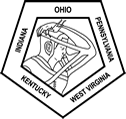<< Back to the abstract archive
Concussion in the pediatric population: Predicting risk by facial fracture pattern
Paul N. Afrooz MD, Lorelei J. Grunwaldt MD, Rachel Grubbs, Joseph E. Losee MD, Noel Zuckerbraun MD
University of Pittsburgh, Division of Plastic Surgery
2010-04-05
Presenter: Paul N. Afrooz, MD
Affidavit:
Director Name:
Author Category: Resident/Fellow
Presentation Category: Clinical
Abstract Category: Craniomaxillofacial
Background:
Diagnosing concussion can be challenging as patients typically have normal neurological imaging, and symptoms that develop remotely. The purpose of this study is to describe the incidence of concussion in patients with facial fractures and to determine whether certain facial fracture types are associated with concussion.
Methods:
A retrospective review was performed on patients age 0 to 18 years who were evaluated in the emergency department of a major urban children's hospital from 2000-2005. Cases were identified by ICD-9 code for facial fractures. Data included demographics, presence of concussion, and facial fracture type.
Results:
782 patients were diagnosed with facial fracture. 91 patients had intracranial injury and were excluded leaving 691 patients for evaluation. The mean age was 11.1 (sd 4.8). 69% percent of patients were males, and 81% were Caucasian. 31.7% of patients were diagnosed with concussion. Age, sex, and race were not associated with concussion. On univariate analysis, skull, orbit, and maxillary fractures were associated with higher rates of concussion, whereas nasal and mandible fractures were associated with lower rates (p<.05). With logistic regression analysis controlling for age, race, sex, and individual fracture types, the odds of having a concussion was higher in those with skull fractures.
Conclusion:
One third of patients with facial fractures were also diagnosed with concussion. There were higher rates of concussion in patients with concomitant skull fractures, and those with orbital and maxillary fractures. Our data suggests that a higher index of suspicion should be maintained for patients with skull, orbital, and maxillary facial fracture patterns.



